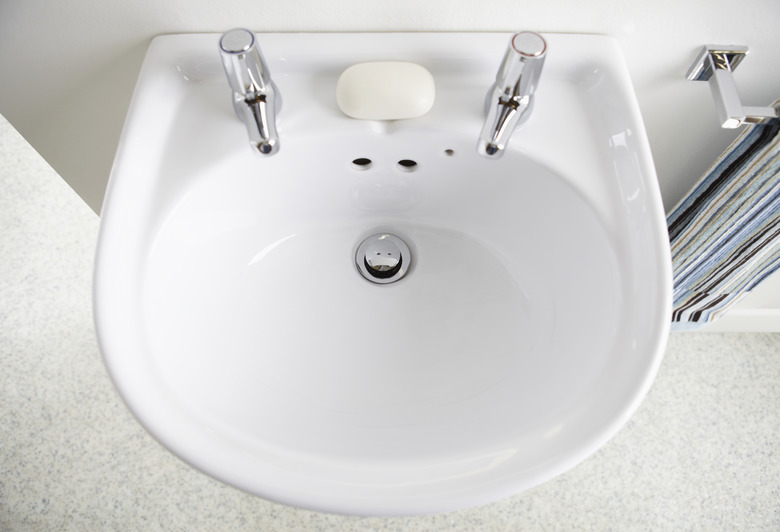What Is The Standard Size For The Drain Hole In A Bathroom Sink?
Many things about bathroom plumbing are standardized these days, so you might be surprised to find out that the drain size in a bathroom sink isn't always consistent: There's no real standard controlling the size of the drain hole.
Most sources claim that the most common size for the sink drain hole is 1 1/4 inches, although some cite 1 1/2 inches as the standard. These two sizes are the most common, although you may also see sinks with a 1 5/8-inch drain hole.
Tip
Though there is no standard size for bathroom sink drain holes, the most common size is 1 1/4 inches, and you may also see 1 1/2- and 1 5/8-inch drain holes.
Bathroom Sink Drain Sizes
Bathroom Sink Drain Sizes
What's important to understand is that the drain of the sink has to be equal in size or smaller than the drain hole. A drain hole of 1 1/4 inches needs to have a drain that size or smaller. A drain hole of 1 1/2 inches can use a drain that is 1 1/2 inches or 1 1/4 inches.
A smaller drain will still work because the measurement applies to the portion of the drain that will fit through the hole in the sink; drains come with a drain flange — the part that will sit in the sink and cover the drain hole — that's much larger than the threaded portion. The sink should come with manufacturer's information on what sort of drain assembly is adequate for use.
The rest of the piping and plumbing will have to fit the sink drain. The piping should be the same size as the drain hole: for a 1 1/2-inch drain hole, use a 1 1/2-inch pipe. All bathroom sink piping is readily available at local hardware and home improvement stores. It's best to stick to one size for the sink piping, making sure it will all match.
Housing Codes and Drain Sizes
Housing Codes and Drain Sizes
Sink drain sizes are required to match the housing code for each state. These codes regulate the plumbing of bathrooms, kitchens and other spaces; they exist to ensure that household plumbing remains safe and effective.
While there are a set of national standards stated in the Uniform Plumbing Code, states and local governments also set out codes that can be much more stringent. It's important to check these codes when upgrading or adding any new plumbing lines in the bathroom. Old plumbing and pipe can stay, but anything new will have to meet the most recent codes.
Types of Drains
Types of Drains
There are a number of different types of drains you can install in the bathroom, including grate or grid drains, pop-up drains, and soft-touch or click drains:
- A grate drain or grid drain acts as a strainer rather than a stopper; this type of drain has
holes in it that cannot be closed, which prevents water buildup and acts to
catch larger matter before it enters the drain. This type of drain is
mostly seen in stand-alone showers, where you wouldn't want to fill the basin
with water and where you need a strainer to catch hair and other material. - A pop-up drain
contains a lever on the faucet to open and close the drain. With this kind of
drain, you'll have to match the drain and the faucet to make sure they
work together in this way. The lever can move up and down or forward and
backward to shift the drain cover open and closed. - A soft-touch or click drain doesn't require a lever; instead, this type of drain seals shut and
reopens at the press of a finger. The mechanism is sensitive to that pressure
so that closing and opening the drain stopper can be done with a single touch.
